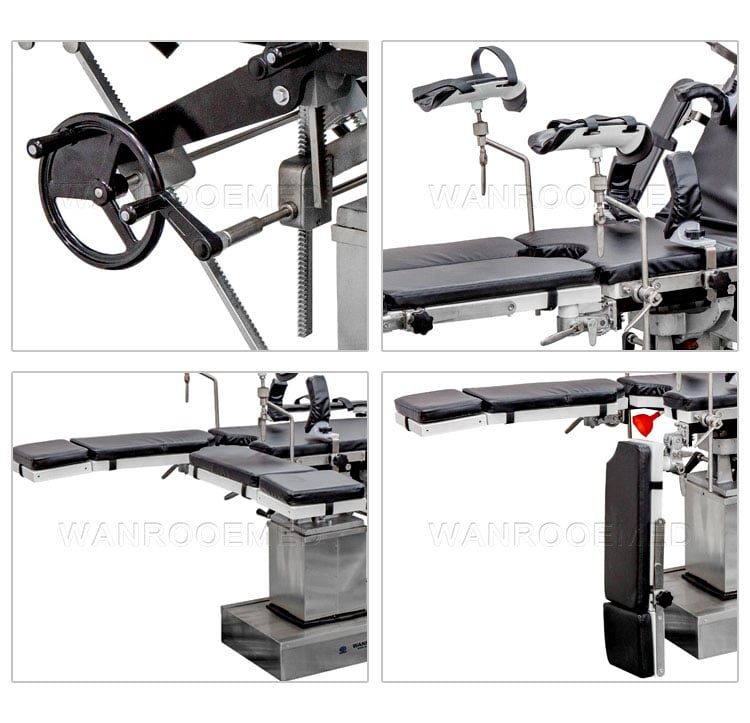Starting from the most important operating room table, do you have any equipment to accommodate them?
Operating Room tables typically have load-bearing capacities ranging from 500 pounds to more than 1,000 pounds. Additional OT table accessories will assist in the localization of obese patients. Whether your clinical needs are neurology, urology, orthopaedics, cardiology, or other areas, it is safe to ensure that you are providing appropriate weight bearing capacity for your patients.
Our Operating Room table provides a load-bearing capacity of 1000 pounds and c-arm imaging for almost every part of the body. This is an important function, especially for obese patients. The table also has a solid, low-profile base and excellent positioning ability. Load-bearing capacity will often vary depending on the table location, so it is advisable to discuss this with your sales representative before making such an important purchase.
1. Evaluate the weight
For our bariatric surgery center, our tables need at least 1,000 pounds of capacity. You may not treat this morbidly obese patient. An average overweight or obese person who meets the criteria for ambulatory surgery may receive a table of at least 500 pounds.
2.ot table accessories
You may need supplements to ensure the patient is well supported and comfortable. Look for accessories with a variety of easy to use.
Width expansion. Depending on the patient's size and shape, you may need to use table extensions to support him properly. The desktop extender should provide you with enough platform space so that no part of the patient is in danger of falling off the table.
Leg and foot support. Especially if you have any reason to place the patient in the reverse trendelenburg position, make sure the legs are fully supported. If the knee is bent, the patient probably won't stay at the table for long. Padded pedals and straps and ankle pads help support the lower body.
Arm support. Arm Support keeps the patient's Arm up, out of the way and supported, so you can reduce the force of gravity pulling the patient forward when the table is raised. I can't stress enough that arm support and arm plates should be well padded to avoid pressure sores, which overweight and obese patients are prone to due to poor skin circulation (made worse by anesthetics and operating room temperature).

3.Lower
Look for the table with the lowest possible minimum height. When the operating room table can be closer to the ground, it will be easier to transfer the patient from the stretcher to the table or from the stretcher to the air mattress to the table. It's very difficult to move patients up rather than down or directly. (Although you can completely avoid this potential transfer problem by using a stretcher with a high load rating;
Plus, the lower height allows you to reach through the patient -- I've seen nurses have to walk around the table when preparing because they can't reach the entire abdomen. Overweight and obese patients, because of their size, increase the height of the table in a way that average size patients do not. This raises the question of the surgeon's comfort; If you can lower the table sufficiently, the surgeon can use their hands and arms at their accustomed level. If you can, there's a simulation setting where an overweight patient sits on the table you're considering.